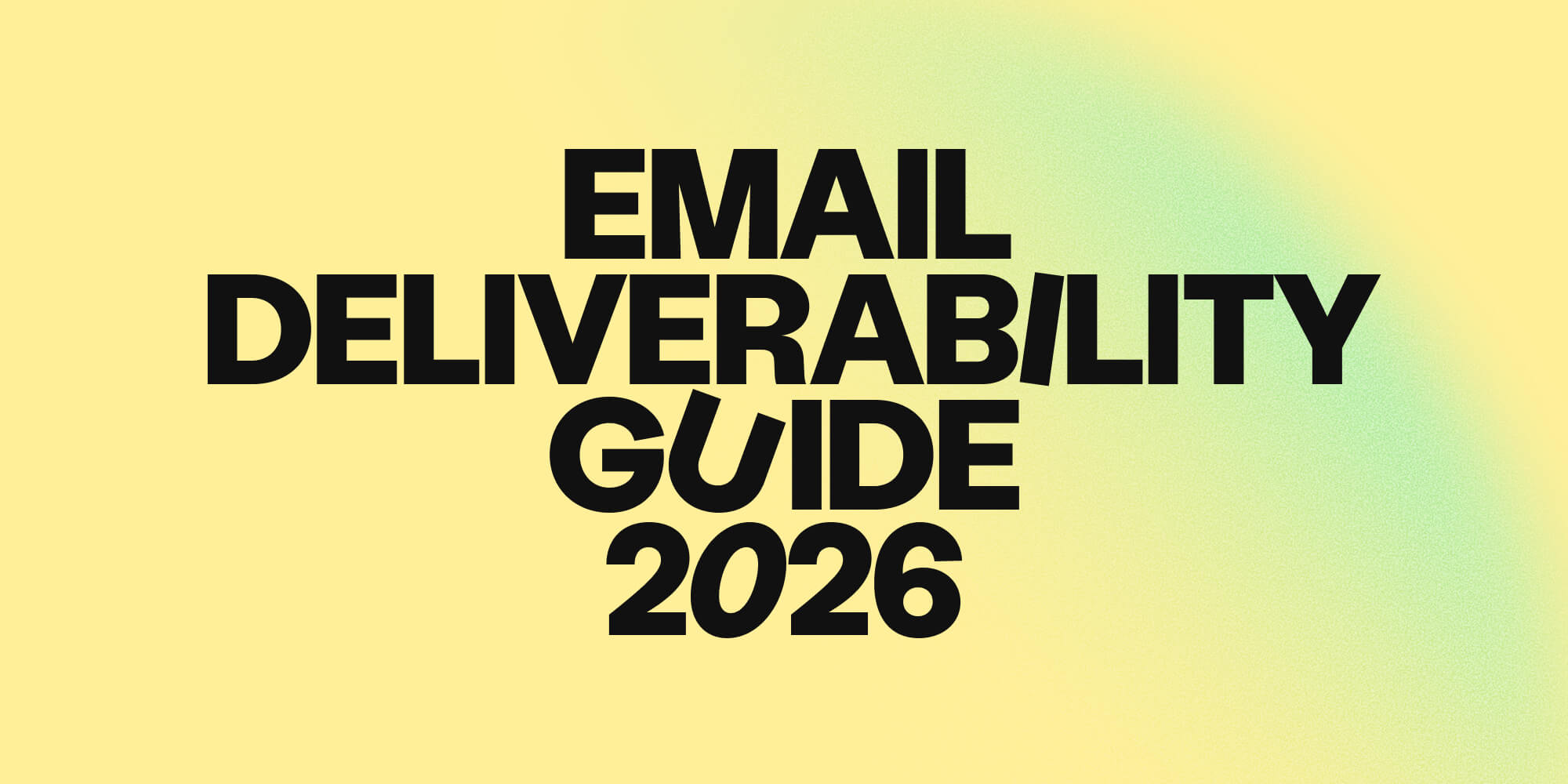How to calculate and use your Total Addressable Market (TAM)
•
March 31, 2024
.jpg)
The first step of sales is knowing who you’re selling to.
Not only do you need to define your Ideal Customer Profile; you also need to figure out just how large your Total Addressable Market (TAM) actually is in order to start strategizing your marketing and sales outreach.
In this blog, we’ll dive deeper into the concept of your Total Addressable Market to examine why it matters, how you can calculate it, and how to use it in your go-to-market approaches.
What is your Total Addressable Market (TAM)?
Understanding the basics
Let’s start with the total addressable market definition. Your Total Addressable Market describes the entire potential revenue opportunity for your solution. In other words, it gives you an indication of the size of your target market or specific market segment.
What is Total Addressable Market? TAM serves as a guiding light for businesses; without it, you run the risk of over or under-estimating your target market and making go-to-market decisions that aren’t cost-effective.
What is the acronym TAM?
TAM is the abbreviation of Total Addressable Market. As a metric, it’s used to estimate the total revenue opportunity available for a product or service within a specific market.
How do you define your TAM?
Defining your TAM total addressable market will be your starting point.
Avantages of defining your TAM
A well-defined TAM offers several benefits: it sharpens your focus on future product development, provides insights into market fit, attracts investors by demonstrating growth potential, and highlights competitive dynamics.
All of this means you can allocate resources effectively and avoid overestimating your market size.
Your Total Addressable Market basics
To define your TAM, you need to ask yourself some key questions about your target market (some of these are also relevant for defining your Ideal Customer Profile, so you should already have started to consider them:
- What do your current and potential customers have in common?
- What industries do you historically sell into?
- Where are your target companies located?
- How big are your target companies companies?
- How is the market evolving, and where can you expect growth?
You can leverage your B2B database to filter companies in your TAM based on industry, size, and location. If you notice that any of your current target companies are filtered out, it might be a sign you need to recalibrate your TAM definition - or that you need to reassess who you’re targeting!
Depending on the scope of your sales operations, it might make sense to start breaking your TAM into sub-TAM segments so you can adjust your go-to-market strategy to each grouping. For instance, you might create tiered segments according to:
- Industry
- Company size or headcount
- Funding status or round
You don’t need to create a lot of TAM sub-segments, but separating your prospects into a few different tiers will help you identify the highest-value opportunities and prioritize your outreach around those.
How to calculate your TAM
There are actually two different ways you can go about calculating the size of your TAM:
1. The bottom-up approach to TAM
The bottom-up TAM model is considered the more reliable of the two calculation methods because it is more connected to existing sales data.
- Identify the total number of accounts in your target industry.
- Determine the Annual Contract Value (ACV) of your product or service.
- Multiply the total number of accounts by the ACV to obtain your TAM.
In other words, TAM = $(Total # of accounts) x ACV
For instance:
Imagine you’ve identified 2,000 vendors who want to buy coffee beans from you in the UK. Each case of beans costs $50, and on average each vendor buys 50 cases per year, bringing you $2,500.
Your TAM for UK would be 2,000 multiplied by $2,500, which equals $5 million.
If you wanted to segment your TAM by account size, you could separate your 2,000 vendors according to whether they’re SMBs, mid-market, or enterprise organizations, and then find the ACV values for each segment.
For example, 1,100 might be SMBs with an ACV of $2,000, 500 mid-market (MM) with an ACV of $2,500, and 400 enterprise (E) with an ACV of $4,000.
You could then calculate your TAM as $(# of SMBs x ACV) + $(# of MMs x ACV) + $(# of E x ACV)
This would be (1,100 x $2,000) + (500 x $2,500) + (400 x $4,000) = $5.05 million.
2. The top-down approach to TAM
Alternatively, you can use the top-down approach to calculate your TAM using industry research.
Instead of using your own sales data, this approach allows you to use secondary market research from reputable sources like Forrester or Gartner to gauge the overall size of your target market.
Essentially, you extrapolate data from industry reports to determine the total market size and then estimate your company's potential market share.
In practice, you would start by finding out the overall value of a particular market, then paring this down according to your TAM definition (i.e. the industries, regions, and company types you’re targeting).
Unsurprisingly, this method is considered less reliable than the bottom-up approach described above. It’s also reliant on the availability of industry data that may or may not be exactly relevant to your product niche.
3. External research
External research involves using published market reports to determine TAM. This method is quick and provides credible figures but lacks transparency on how the data was derived.
Reports from firms like IDC or Forrester can offer valuable insights, but it’s essential you understand their assumptions and methodologies before relying on it to inform your strategy.
4. Value Theory Approach
Value theory assesses how much customers would pay for an improved product or service. This approach is useful for emerging markets or innovative products.
For example:
If a new technology could reduce costs by 20%, calculate the potential revenue based on how much customers are willing to pay for these savings.
How to use your TAM to inform your sales strategy
Your TAM isn’t just a vanity metric or moonshot number; it’s the north star for your go-to-market at both a macro and micro level.
- At a macro level, it helps you understand how much influence your brand can potentially exert in your target industry. Remember, your target audience isn’t everyone. It’s the people and businesses who will find value in your solution, so the better you can define your TAM, the clearer you can communicate your market positioning to employees, investors, and other stakeholders.
- At a micro level, segmenting your TAM allows you to prioritize and deploy resources according to your most profitable areas of business. Your TAM distribution might affect the way you structure your revenue team (targeting specific business segments), your marketing and outbound campaigns, and will certainly inform your budgeting decisions.
How your Serviceable Addressable Market (SAM) differs from your TAM
While TAM represents the total market opportunity, Serviceable Addressable Market (SAM) focuses on the segment of the market you can target with your current resources.
SAM helps you refine your strategy by identifying the portion of TAM that is realistically attainable based on your product’s capabilities and market reach.
For example, your SAM could be smaller than your TAM because you don’t have the personnel to engage with buyers in certain countries, or because you don’t have a license to operate in a specific region.
How your Service Obtainable Market differs from your SAM and TAM
Serviceable Obtainable Market (SOM) is the sub-segment of your SAM that you can realistically capture, considering competition and market constraints in the immediate term.
Understanding your SOM allows you to set achievable sales goals and allocate resources effectively.
You can define your SOM by assessing your competitors’ share of the market and using this to estimate your own.
Why TAM, SAM, and SOM matter
Understanding TAM, SAM, and SOM is crucial for a well-rounded market strategy. TAM gives you the big picture of the total revenue opportunity, helping you gauge the full potential of your market. SAM refines this picture by focusing on the segment of the market that aligns with your business capabilities, ensuring that your strategies are targeted and practical.
Finally, SOM narrows this further to the realistic portion you can capture, factoring in competition and market constraints. By leveraging these metrics, you can make informed decisions about resource allocation, set achievable targets, and strategically position your product or service. This holistic view allows you to plan effectively, be more adaptive to market changes, and seize opportunities more efficiently.
Proving or refuting your assumptions with TAM exercises
Accurate TAM calculations are essential for validating your market assumptions and setting realistic business goals. By understanding and applying TAM, SAM, and SOM, you can refine your sales strategies, attract investors, and achieve better market positioning.
Find and conquer your TAM
To find your target audience, you need B2B data you can rely on. With access to more than 200 million professional global contacts and more than 20 million company records, Amplemarket’s database allows you to uncover your real market potential. Identify and segment your TAM with detailed AI-powered filters and find the customers you’re missing in record time - sign up for a demo to see it in action today!
FAQs on Total Addressable Market
What is Total Addressable Market (TAM)?
Total Addressable Market (TAM) represents the total revenue opportunity available if your product or service could capture 100% of the market. It helps businesses understand the scale of potential market demand for their offerings.
How to calculate total addressable market?
To calculate TAM, multiply the number of potential customers in the market by the average revenue per customer. You can use approaches like top-down, bottom-up, or value theory to estimate these figures.
What is the formula for service addressable market?
The Serviceable Addressable Market (SAM) is calculated by segmenting the TAM to reflect the portion of the market that your business can realistically target with its products or services. The formula is: TAM × % of market that is serviceable by your business.
What is an example of a TAM?
An example of TAM is the global market for electric vehicles. If there are 50 million potential customers worldwide and the average revenue per vehicle is $30,000, the TAM would be $1.5 trillion (50 million × $30,000).
How do you calculate total addressable market bottom-up?
To calculate TAM bottom-up, start with detailed sales data from a smaller subset of the market. Identify the number of potential accounts and their annual revenue, then extrapolate these figures to estimate the total market size.
Is TAM the same as market size?
TAM is a broad measure of the total revenue opportunity in a market, assuming full market capture. Market size generally refers to the actual size of the market in terms of revenue or volume, which can be more specific and may not assume full capture.
Subscribe to Amplemarket Blog
Sales tips, email resources, marketing content, and more.
Questions you may have
Frequently asked questions















